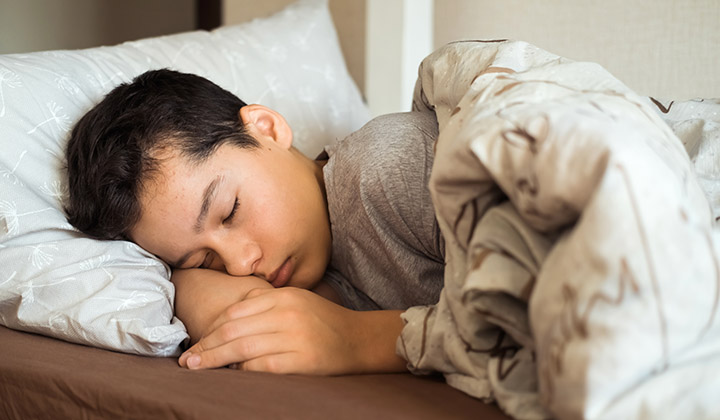Get updates
Have a parenting hack to share? Or a topic you'd like to see?
Safe sleep tips so the whole family can get good zzz’s

When expecting a new baby, you’re prepared to get less sleep. But be sure to also prepare a safe sleep environment for baby – so when they are sleeping soundly, you can too. Safe sleep goes beyond the newborn stage, with standards to follow for toddlers and “big kids,” too. Keep reading for our tips for safe sleep at all ages.
The ABCs of Newborn Sleep
When it comes to newborn sleep, ensuring their safety is as simple as the ABCs – meaning, they should be:
- Alone. It is recommended babies sleep in their own sleep area, with no other people, pillows, blankets or stuffed animals. Co-sleeping or bedsharing is never recommended with your newborn.
- On their backs. Up to age 1, always place your baby on their back. Once your baby can roll in both directions, it is fine to leave them in that position, but always place them on their back initially.
- In a crib (or bassinet, or portable play area with a firm sleep surface). Babies should not sleep on an adult bed or other soft mattress – including waterbeds, sofa, recliner, pillow, etc.
You should also avoid car seats or baby swings for naps or night sleep, as the child’s head can tip forward, leading to suffocation. It is also advised to avoid sleep positioners and weighted blankets with newborns.
Tips for infants (2 to 12 months)
Congratulations – you’ve graduated from the newborn phase! But it’s still important to keep good sleep hygiene. Here are some tips to keep in mind as your little one grows:
- Once your infant shows signs of rolling, be sure to stop swaddling and use a sleep sack or wearable blanket. Remember – blankets are not advised until about 1 year of age.
- Room sharing (not bedsharing) is recommended for the first 6 to 12 months. Once you feel comfortable, consider moving your baby to their own room, if preferred.
- Once your child can sit up independently, lower their crib mattress to the middle setting. Once they can stand or pull up, lower to the lowest setting.
- Place your baby on their back to sleep, but if they roll on to their belly, it is OK to leave them in the sleep position they choose.
- Once your child can sit up or grab items from their crib, remove any mobiles, cords or anything within their reach.
If you do not have a safe sleep space (crib, bassinet, pack and play, etc.) and your child is under 12 months old, learn how you can receive a safe sleep kit through Children’s Mercy’s Safe Sleep, Safe Babies program.
Toddler tips
Your little one has entered toddlerhood, and you both feel like you’re mastering the sleep thing! For toddlers, the safe sleep rules are a bit different than those for newborns and infants, but the good news is guidelines are less strict as kiddos age.
- If your toddler is prone to climbing out of their crib, it may be time to graduate to a toddler or big kid bed.
- Note: Once your child is fully mobile, childproofing the home in general is recommended (baby gates, childproof latches, outlet covers, etc.)
- After age 1, you no longer need to put your child to sleep on their back. They can safely sleep on their back, side or stomach – whatever position they prefer!
- Around 18 months, it is safe for your child to sleep with a thin blanket. Just be sure it’s not long enough to use to climb over the side of the crib.
- Stuffed animals are not a hazard for toddlers but keep it to 1 or 2 small ones. Avoid any oversized toys, or items with ribbon or string that could post a strangulation risk.
We hope these tips ease your mind and provide some insight when it comes to safe sleep for your newborn, baby or toddler. Now, go have some sweet dreams!

